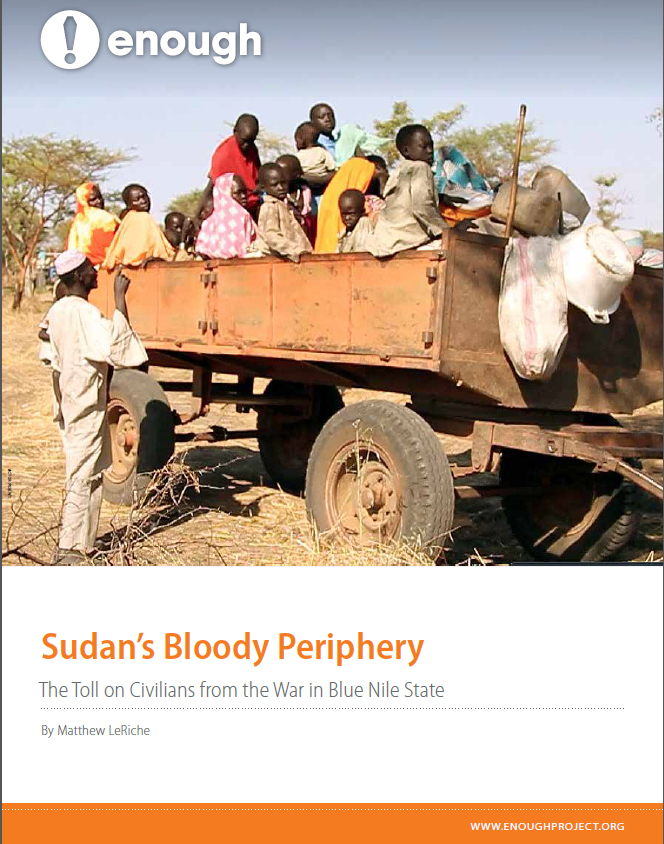
Download the full report here.
A new multimedia report and video produced for the Enough Project by Matthew LeRiche, and filmmaker Viktor Pesenti sheds light on the atrocities propagated by the government of Sudan in Blue Nile State as it combats the Sudan Revolutionary Front, or SRF.
The report, “Sudan’s Bloody Periphery: The Toll on Civilians from the War in Blue Nile State,” based on visits to central Blue Nile in late 2012 and early 2013, exposes Khartoum’s indiscriminant aerial bombardment and denial of humanitarian access to the region resulting inwidespread suffering, terror, and displacement among the civilian population. LeRiche states:
“The people in Blue Nile are suffering routine aerial bombardment and bear the brunt of the government of Sudan’s scorched-earth tactics. They endure miserable living conditions with limited humanitarian assistance, and the conditions only continue to worsen.”
The conflict between the government and the rebel forces intensified at the beginning of the dry season this year. The report states that while aerial bombings have killed few people, the destruction of crops and civilian infrastructure exacerbated the humanitarian crisis there. Additionally, the poor harvest in February and March further contributed to hunger and malnutrition in the region.
The dry season often affords greater mobility, and as a result, ground fighting has increased, leading to the destruction of villages and an influx of up to 150,000 refugees fleeing to South Sudan and Ethiopia. The United Nations High Commissioner on Human Rights, U.S.-based NGO Samaritan’s Purse, Médecins Sans Frontières, and others are working to sustain the humanitarian crisis, but the sheer number of people is too great for existing civil and security infrastructure. Furthermore, the security situation in the displacement camps in South Sudan is still unstable as South Sudanese forces are focused on border defense.
The report and accompanying video include eyewitness accounts from displaced civilians and humanitarian aid workers. One humanitarian medical worker in Bunj, South Sudan, in reference to the conditions of new refugees, said,
“[T]hese are some of the most serious injuries we have seen since the major fighting in 2011. The fighting must have been fierce to cause some of the kinds of traumas we are seeing.”
It is clear that the Government of Sudan is waging war on the civilian population of Blue Nile as it claims to be combating rebels. The report explains:
According to a young woman from Mufu, describing why she and her family had fled, “We ran from the government soldiers. They were burning our homes but we escaped.” Tarafy, another displaced civilian, explained that the SAF had chased everyone from the village; as they fled, they saw the army torching the buildings.
The situation in Blue Nile is grim and the resulting refugee crisis has created a humanitarian disaster. The resources of aid workers in the region are stretched thin and a comprehensive solution is desperately needed to mitigate the multifaceted nature of the conflict.
Download the full report here.

